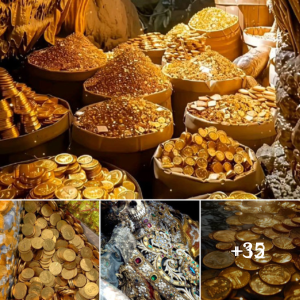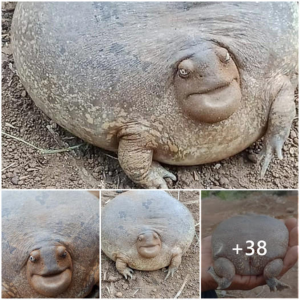French archaeologists have discovered a vividly painted tomb from the 2nd century B.C. in the necropolis of the ancient of city of Cumae. Painted tombs from this period have been found before in the Cumae necropolis, but most of them were painted in bands of red and white. One had funerary boxes decorated in a painted marble effect. This one is the only tomb from the 2nd century B.C. that has been found painted with figures, not just in Cumae, but in all of the Campania region.

The wall to the right of the entrance to the tomb has a nude servant carrying a jug of wine. A krater, a vase used to mix wine and water, is on a stand on his left. Left of the door are a situla (a bucket-shaped vessel), a wooden table and an amphora of wine on a stand. The side wall is also painted but has suffered from plaster loss making any figures impossible to discern. It appears to be a landcape. Because elements of large meal are visible, archaeologists believe it’s a banquet scene. The pigments on the remaining plaster are in excellent condition.

Figural painting was popular in tombs from the late 4th, early 3rd century B.C., but had been out of favor for at least a century when this tomb was built. The motif of a funerary feast was also passé, something seen in the oldest tombs. The owners of the tomb must have had retro tastes, because they certainly had the money to buy whatever they wanted in tomb decor. Only the elite could afford such elaborate painted walls.

No human remains were found. There are three funerary beds, however, so there were probably three people buried in there, although it’s possible all of the beds were not occupied. The tomb was built in one fell swoop, not constructed in stages or added to over years. In addition to its elaborate wall paintings, the tomb structure itself is relatively complex, with a number of vaulted chambers built from volcanic tuff.

The fact that this unusual wall painting has survived is an incredibly lucky break given that the tomb was disturbed by looters, likely in the 19th century when many of the stone-sealed tombs in the 2nd century B.C. area of the necropolis were broken into and robbed. The treasure hunters left sufficient remnants behind — human remains, alabaster perfume bottles, gaming dice, bone and bronze fittings from a wooden box — to enable researchers today to date the tomb.
In order the preserve the delicate, rare fresco which would be endagered by the elements and people of ill-intent, archaeologists removed it from the walls and collected all the fragments they found on the ground. The work will be reassembled in the laboratory.

Cumae, about 15 miles west of Naples, was renown in antiquity as the oldest Greek colony in the West, founded in the 8th century B.C. It had particular importance to Rome because it was the residence of the Cumaean Sibyl, the prophetic priestess of Apollo who sold prophecies from an even more ancient oracle than she to Lucius Tarquinius Superbus, King of Rome. The Roman senate and later the emperors protected and consulted the sacred Sibylline Books for hundreds of years until they were destroyed in the early 5th century. Virgil gave the Cumaean Sibyl a key speaking role in the Æneid. Aeneas appealed to Apollo through her for prophetic tips about what he would face in Italy and for instructions on how to descend into the Underworld to speak to his father Anchises.





